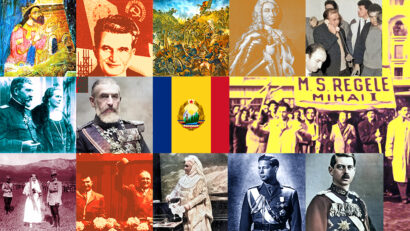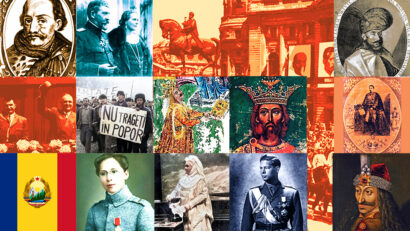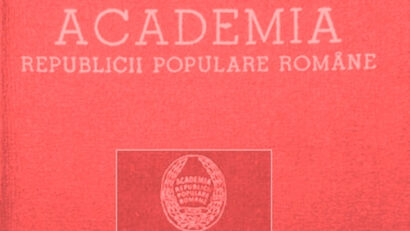Ethnic Saxons and the Great Union
On December 1, 1918, Romanians in Transylvania proclaimed the union with the Kingdom of Romania. The fluid and muddled situation in the autumn of 1918, at the end of WWI, led to confusion among individuals and communities

Steliu Lambru, 28.01.2019, 12:23
Austria-Hungary was breaking apart, and its nations wanted to form nation states. The minorities of Transylvania were not as determined to achieve that aim, and the ethnic German minority, the Saxons, was grappling with its own prejudices and an unsure future. However, the declaration made by Romanians on December 1, 1918 led the Saxons to formulate their own point of view. On January 8, 1919, the Saxon Central Committee convened in the town of Medias. The 138 delegates endorsed the union of Transylvania and Romania.
Historian Vasile Ciobanu with the Social Humanities Research Institute in Sibiu, central Romania, told us the story of the Saxon declaration made 100 years ago: “Transylvanian Saxons, which lived alongside Romanians in towns and villages, knew about the preparations made for the assembly in Alba Iulia, they knew about the political transformations to come. In October 1918, when the Austro-Hungarian Empire was beginning to collapse upon itself, the attitude of their representatives was favorable to the preservation of the Hungarian state. We have statements made in the Parliament in Budapest on October 23, 1918 by MP Rudolph Brandsch, then a decision issued by the representatives of the Saxons gathered in Sibiu at the National Saxon Council on October 29, 1918, when they spoke in favor of the preservation of the integrity of the Hungarian state. In November 1918, when events turned in favor of Romanians, the representatives of the Saxons gathered in Sibiu at the National Saxon Council, but also those in Budapest, the Saxon MPs in the Hungarian Parliament got in touch with Romanian representatives. The Central Romanian National Council formed in Budapest, represented by Ioan Erdei, who talked with Saxon representatives in Budapest regarding their attitude towards the decision that Romanians were to make in Alba Iulia. Also, the National Saxon Council, got in touch with the National Council in Sibiu, led by Andrei Barseanu, and found out that the Romanians had decided to unite with the Kingdom of Romania.
The decision of December 1, 1918 was certainly the moment when the Saxons realized that there was only one possibility, that of accepting the newly formed Romanian state. Vasile Ciobanu: “Even if they continued having discussions with the new Hungarian government led by Karolyi, the Saxons decided to have an even attitude towards the Romanians and Hungarians, and took their time, waiting for the Romanian decision. When they saw that the decision of a majority of Romanians was clear, after December 1 the Saxons decided to rally with Romanians in their decision to unite with the kingdom. The decision was not easy, which is understandable, because the Saxons had been a part of the Kingdom of Hungary for 800 years, ever since they had been brought there by Hungarian kings. That being the case, it was difficult for them to change the leadership under which they lived. At the same time, they had had amicable relations with the Hungarian leadership, because the Hungarians had every reason to have good relations with the Saxons as a major political group in Transylvania. On December 1, 1918, the Saxons did not send representatives to the assembly in Alba Iulia. A single Saxon went there, representing the Saxon press, a lawyer who sent in a correspondence, written objectively and fairly, published in the most important Saxon daily, Siebenburgisch-Deutsches Tageblatt on 3 December 1918, which was then republished by other Saxon papers.
We asked Vasile Ciobanu if there had been other points of view expressed at the Saxon gathering in Medias, other than that of accepting the union of Transylvania with Romania: “Initially there was a proposal, in a resolution prepared ahead of time by a group of Saxon representatives, to accept the union of Transylvania and Romania. However, there were a few voices raised with a counter-proposal. We have minutes from the assembly on January 8, 1919, telling us of this counter-proposal. The proposal was to wait for the conclusions of the peace conference regarding the status of Transylvania. It didn’t express very good opinions about the situation in Romania, and made specific reference to the large landholdings and the peasantry that had rebelled in 1907, 10 or 12 years before. The counter-proposal demanded that Transylvania preserved its status as before, to remain part of Hungary. That proposal was refused, its supporters, 4 or 5 out of 138, were persuaded that their version was inadmissible. They had to be persuaded because the assembly wanted to have a unanimous resolution, in favor of the unconditional union between Transylvania and Romania. In reality, the Saxon representatives tried to gain assurances from the Romanian representatives regarding certain rights they wanted to have in the future Romanian state. They specify in their declaration that they were relying on specific points made in the Romanian declaration in Alba Iulia, which, in its 3rd paragraph, referred specifically to the rights of national minority in the future Romanian state.
The centennial of the Saxon council in Medias meant that Romania gained the benefit of a strong minority, a loyalty which in those troubled times was priceless.





























